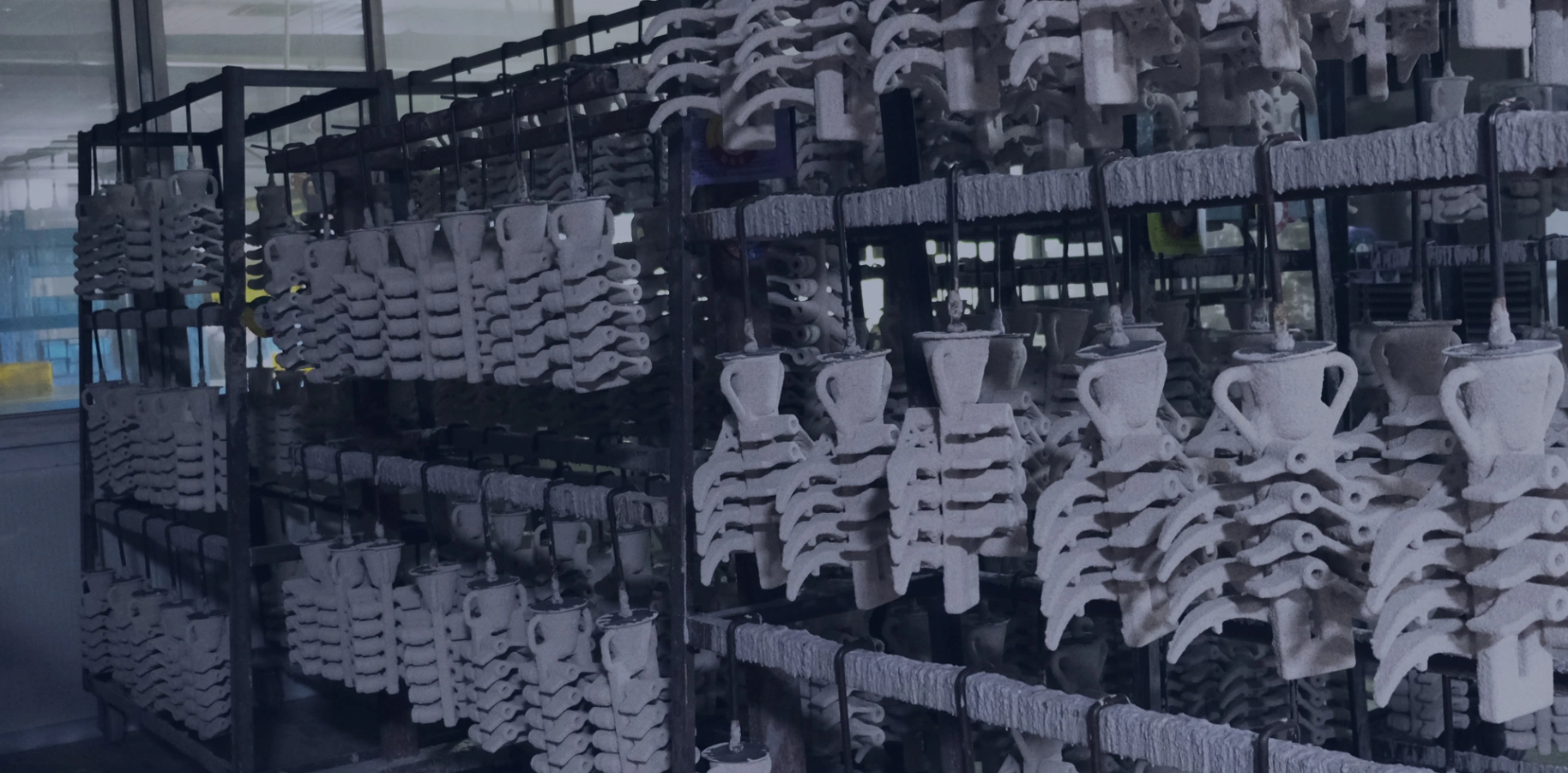SUPERIOR PRECISION CASTING SOLUTIONS
-Lost Foam Casting Process
-Water Glass Casting Process
-Shell Mold Casting Process
-Lost Wax Investment Casting Process

Employees

Equipments

Output



More than 20 years of experience in foundry CNC machining.

According to the customer's requirements, we will choose the most suitable materials by research & development to reduce the cost of product.

We can provide customers structure transforming on stamping parts, welding parts to castings which will improve the service life of the product and reduce the product cost.

We master a variety of design software tools (CAD, PRO/E, Solid Work), Simulation Software (Any casting), Measurement Software (CALYPSO, OBLF), laying the foundation for professional services for customers.

We can provide customers suggestions and design solutions for lightweight products.

We can develop samples by surveying and drawing on the actual samples provided by customers.

We have professional partners to provide professional surface treatment,forging and hardware stamping services.

We have our own patented designs.
Silica Sol Investment Casting is a form of investment casting. The process is very similar except that the investment mould is made from silica sol zircon sand mixed with refractory powder. Silica sol zircon sand is exceptionally fine-grained (10-20 Microns) and can be mixed to a slurry with very low viscosity when creating the mould. The result is a casting method that delivers dimensionally accurate castings with excellent as-cast surface finishes. Crucially, the silica sol zircon mould can withstand temperatures up to 2000°C, making them very useful when casting high temperature alloy steels and stainless steels.

Lost foam casting is a type of evaporative pattern casting. This method is quite similar to investment casting which uses wax instead of foam in the pattern making process.
The foam pattern was first used in metalworking in 1958. Although this mold casting technique is not as popular as other methods such as sand mold casting or permanent casting, it maintains outstanding advantages, especially in casting complicated and precise molds.

Water glass Investment casting is very similar to investment casting (i.e. the lost wax method), but is particularly suited to larger castings and is cheaper to produce. The process provides a far superior surface finish and dimensional precision to that achieved through sand casting, and more complex shapes can be achieved. In addition to steels, it is possible to cast alternative materials such as iron and SG iron using this method.

Shell mold casting is a metal casting process similar to sand casting, in that molten metal is poured into an expendable mold. However, in shell mold casting, the mold is a thin-walled shell created from applying a sand-resin mixture around a pattern. The pattern, a metal piece in the shape of the desired part, is reused to form multiple shell molds. A reusable pattern allows for higher production rates, while the disposable molds enable complex geometries to be cast. Shell mold casting requires the use of a metal pattern, oven, sand-resin mixture, dump box, and molten metal.

Lost wax casting builds a mold around a sacrificial wax model. After the mold investment is set, the wax is melted out and forms a cavity where the metal or glass flows in. Using this method of casting captures fine details in both metal and glass. This ancient method has been used since 3000 B.C. to visually capture the stories of ancient cultures and religions throughout history.


Gear System Casting
Auto Exhaust System Casting Parts
JEEP Roof Connection System Casting

Pin Casting For Tooth And Adaptor
Casting Parts

Meat Chopper Casting Parts
Flat Beater For Stand Mixer
Conical Burrs Grinder For Coffee Machine

Blade Adapter For Seeder
Casting Parts











